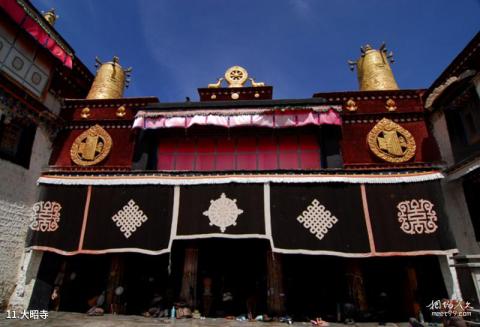
Introduction to the Jokhang Temple: The Jokhang Temple is located in the center of Lhasa and was built in the 21st year of Zhenguan in the Tang Dynasty. The main statue of Sakyamuni in the temple was brought to Tibet by Princess Wencheng. The reason why Lhasa is known as the "Holy Land" is related to this Buddha statue. The temple was originally called "Jhasa", and later "Jhasa" became the name of the city and evolved into today's "Lhasa". After the Jokhang Temple was built, it underwent repeated modifications and expansions in the Yuan, Ming and Qing dynasties before it reached its current size. The Jokhang Temple is 4 stories high, and the golden dome and brackets of the entire building are typical Han style. The watchtowers and carved beams are of Tibetan style. The 103 wood carvings of beasts and sphinxes arranged in rows under the eaves on the second and third floors of the main hall also present the style characteristics of Nepal and India. There are nearly a kilometer long Tibetan murals in the temple, "Princess Wencheng's Entry into Tibet" and "Jokhang Temple Construction Plan", as well as two Ming Dynasty embroidered protector thangkas, which are the Tantric Buddhas enshrined by the Gelug Sect of Tibetan Buddhism. Two of them are rare art treasures.
